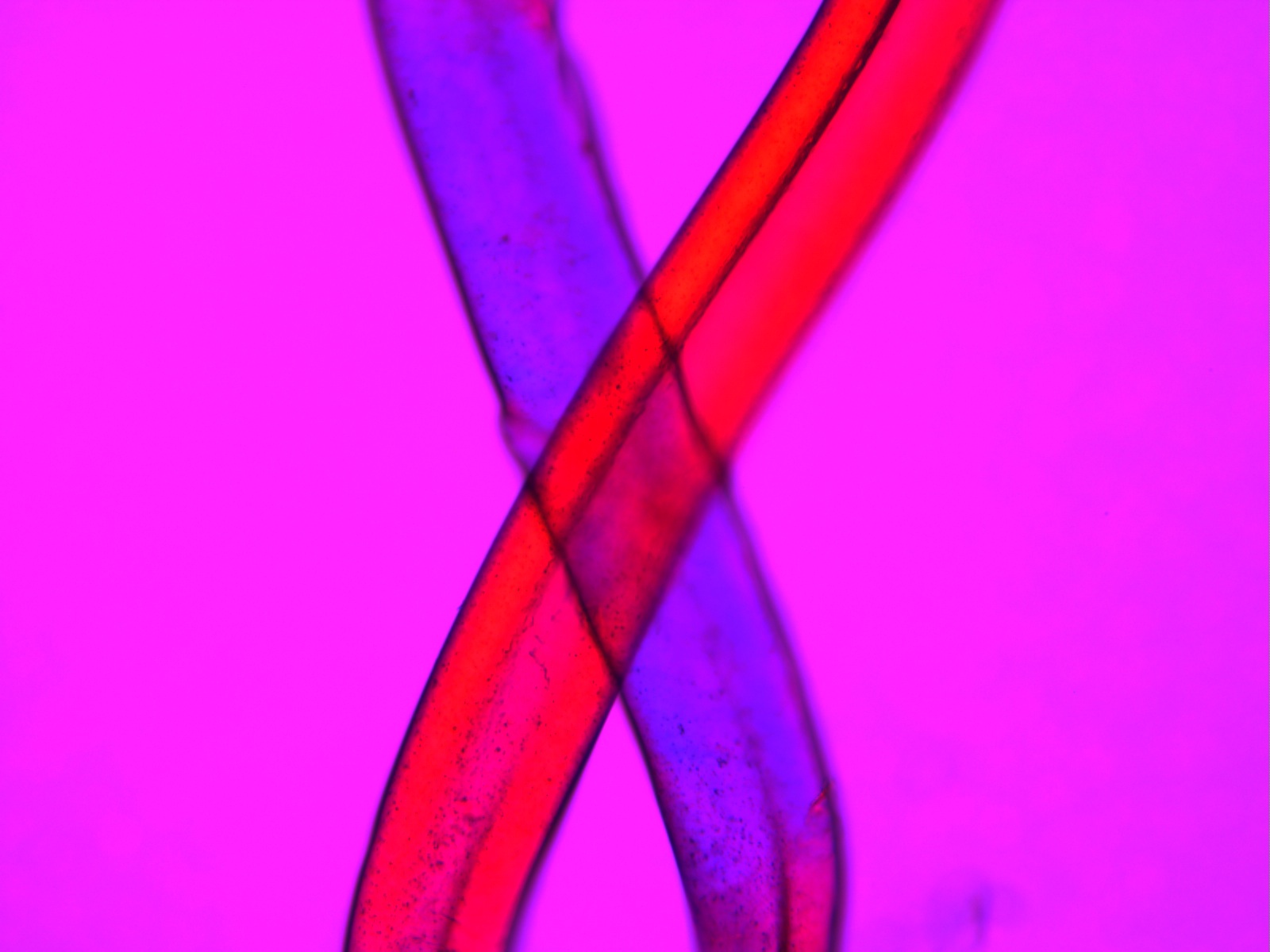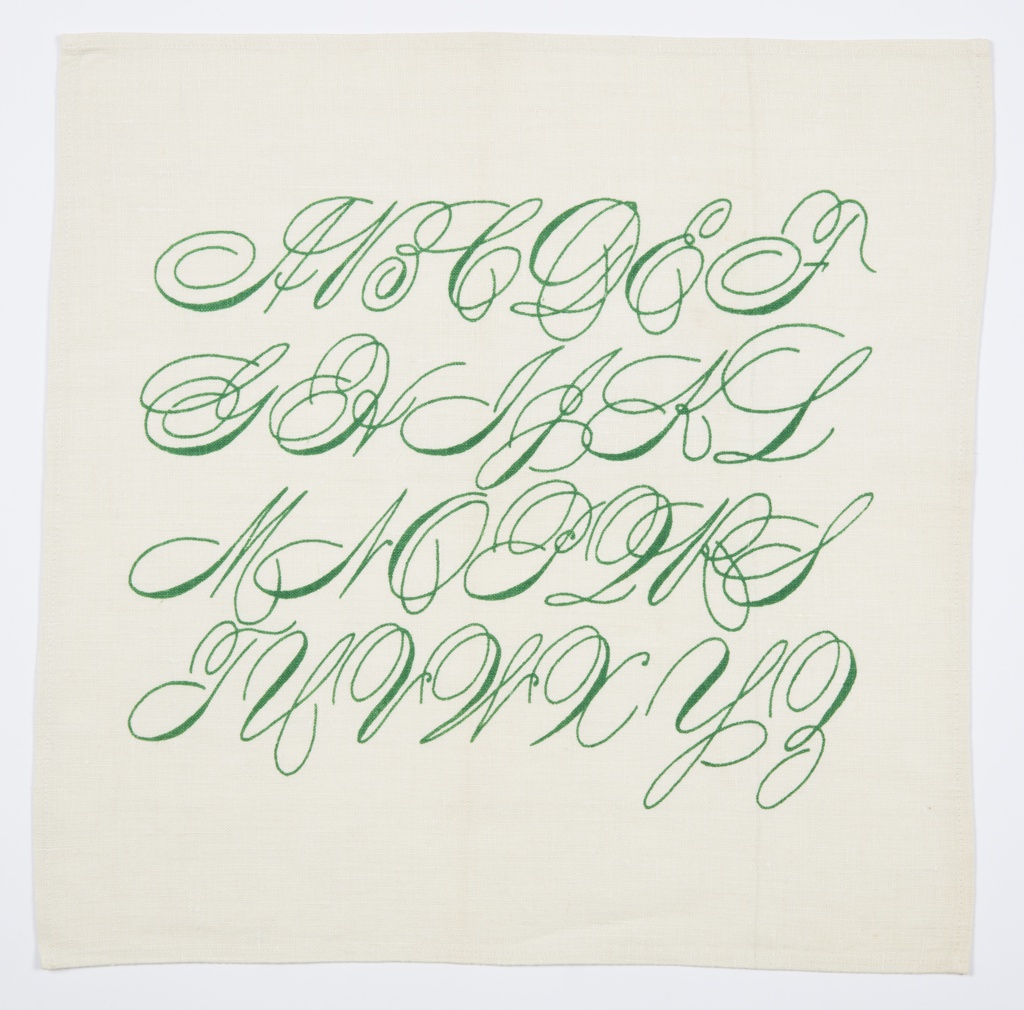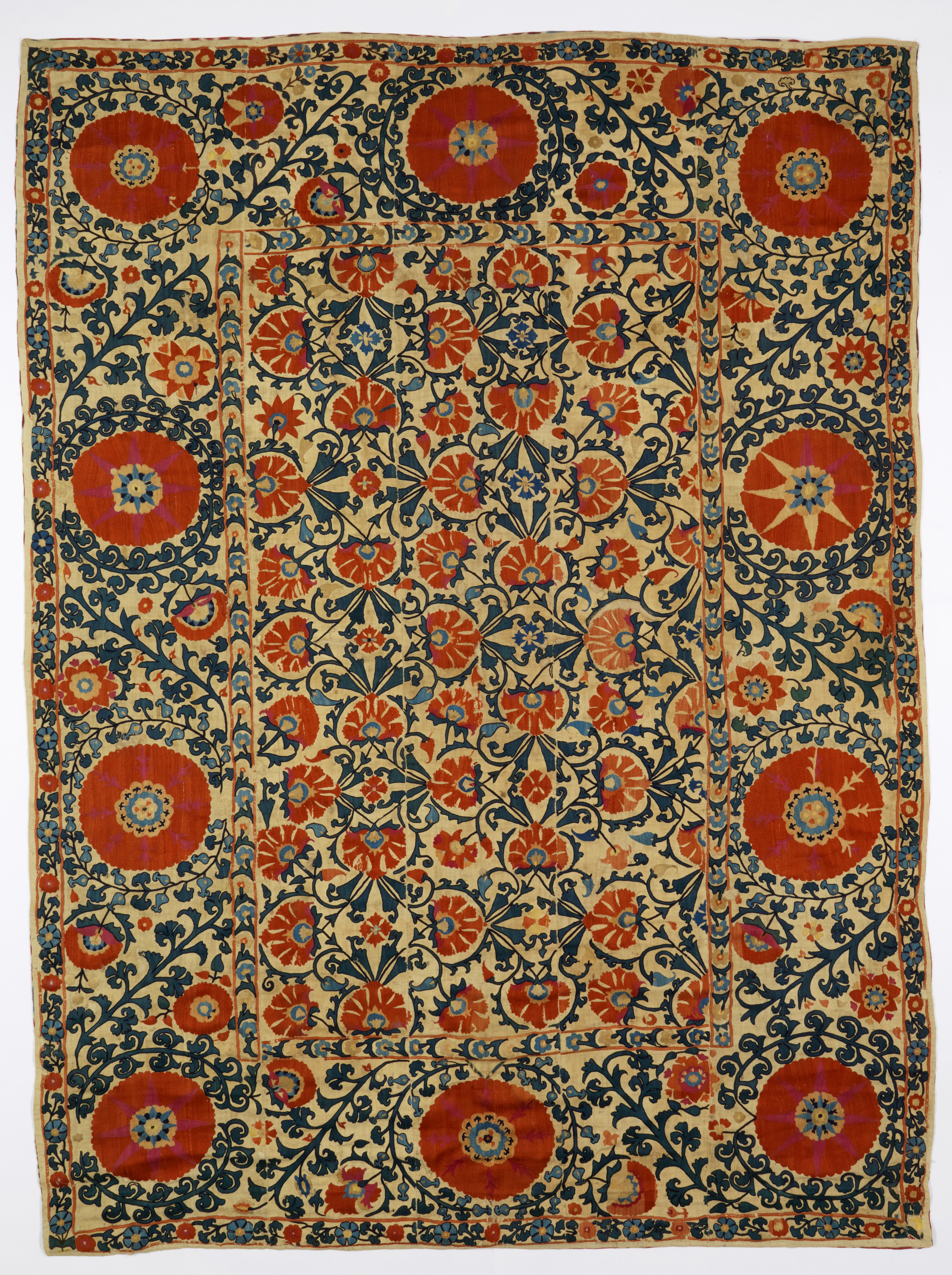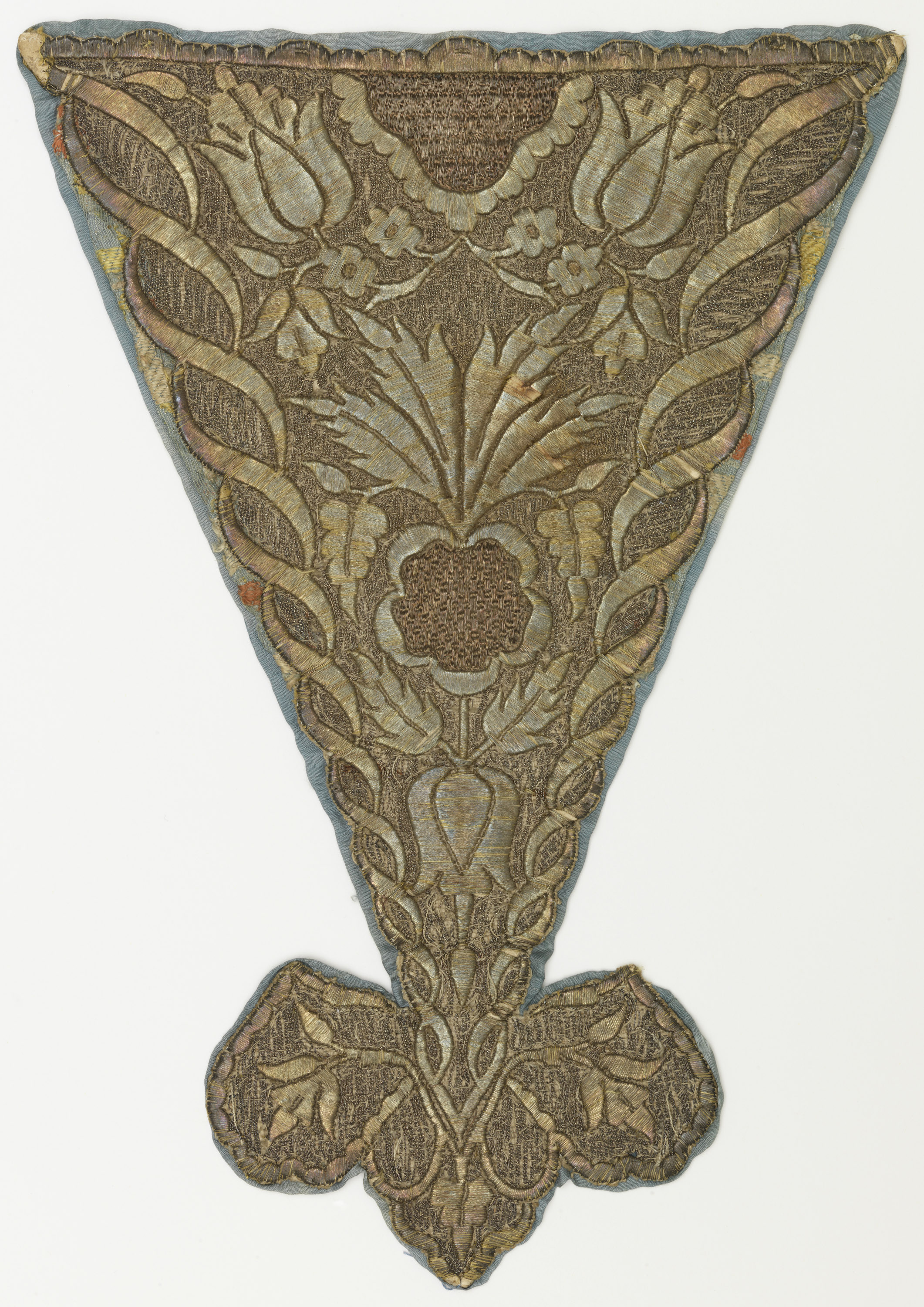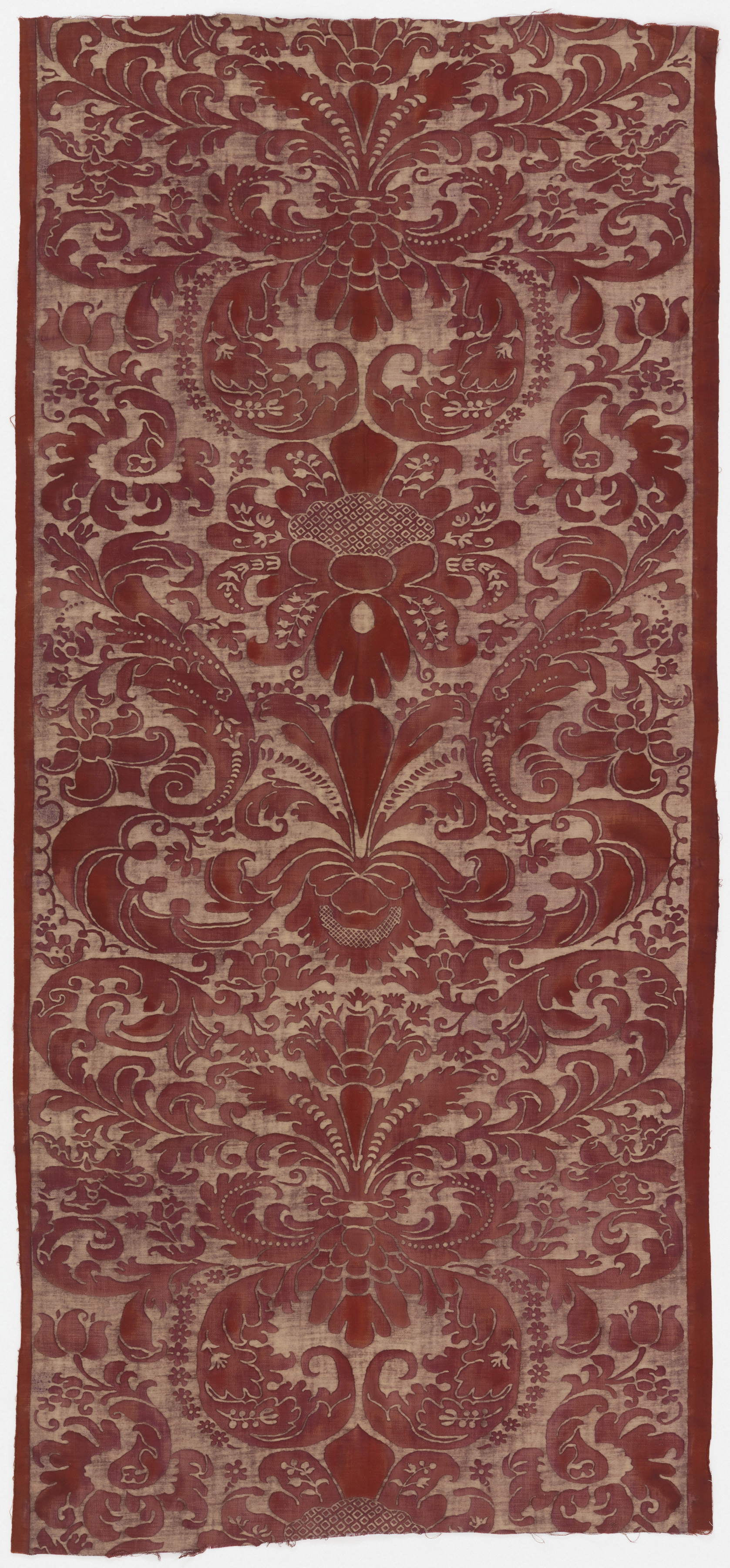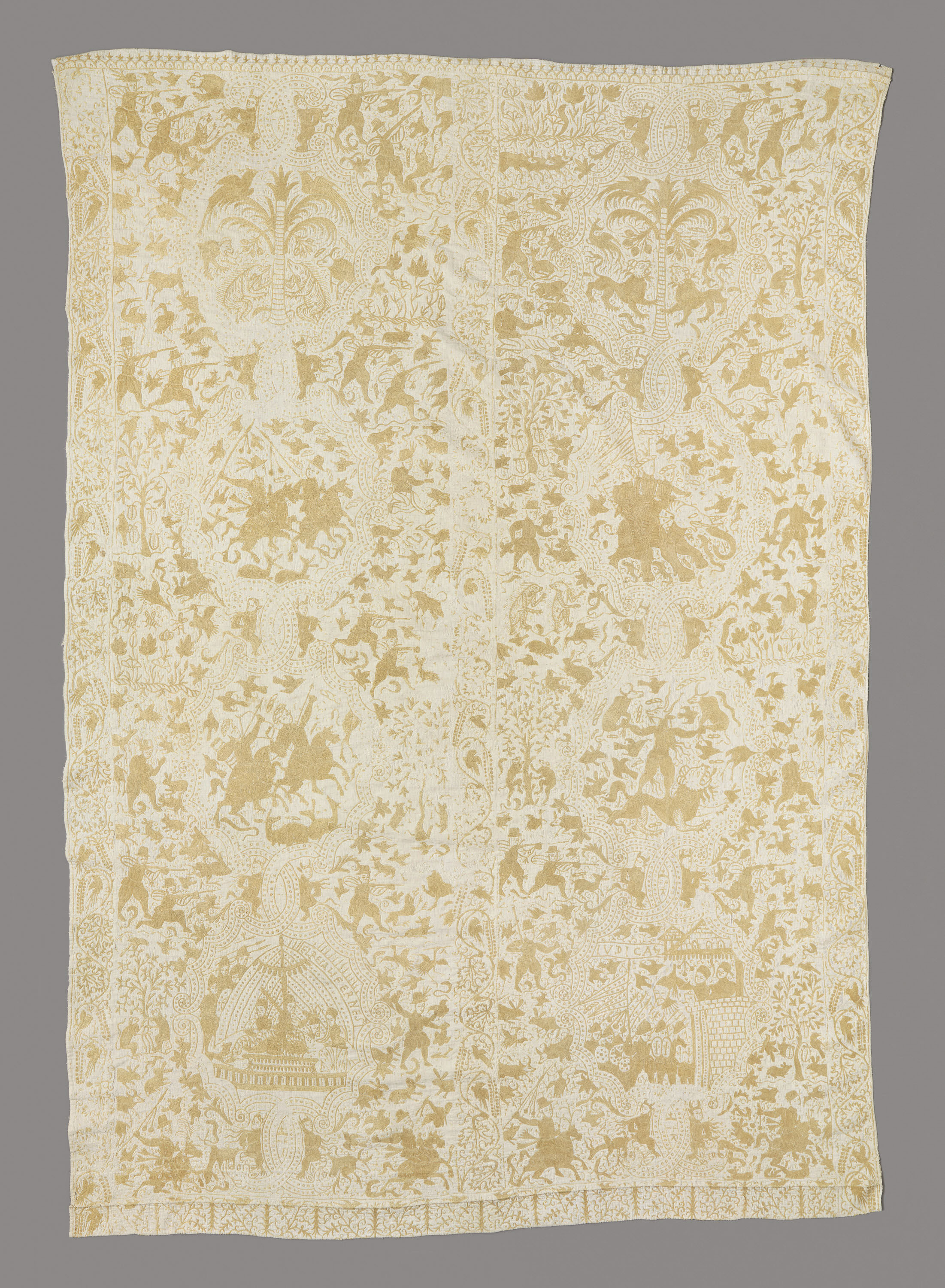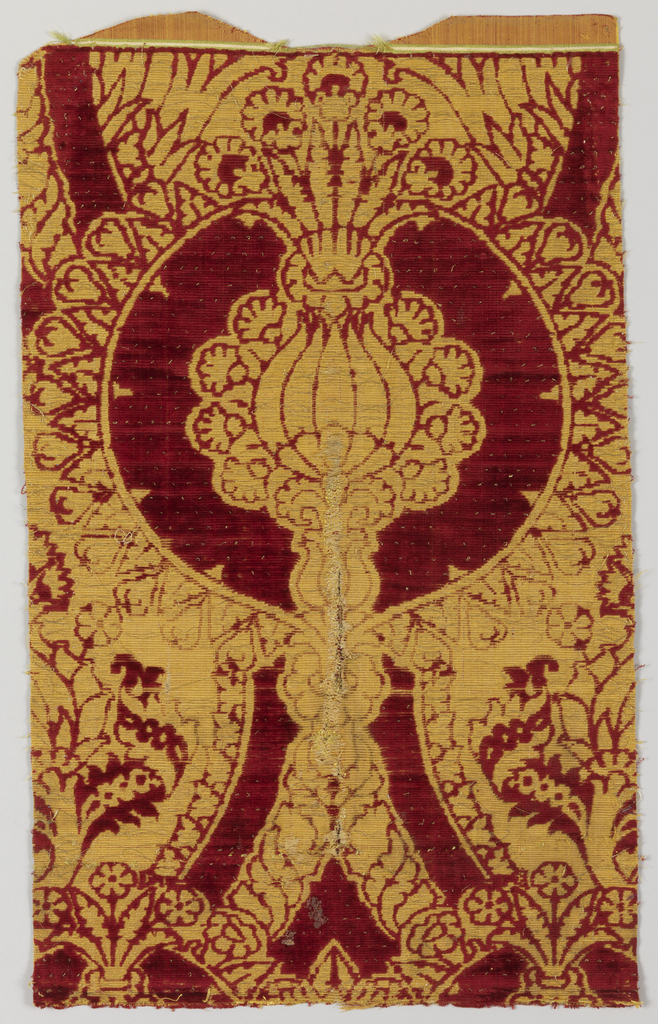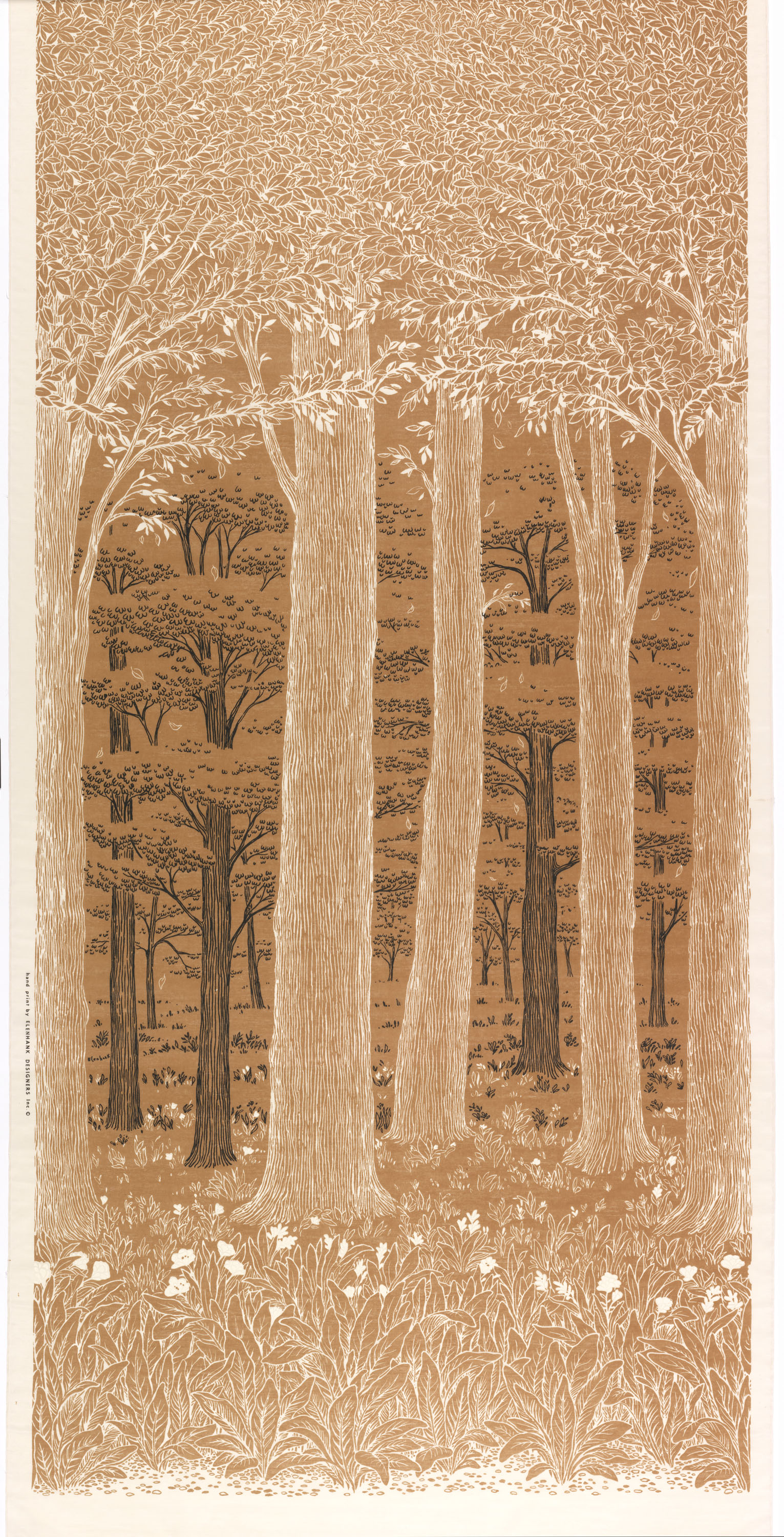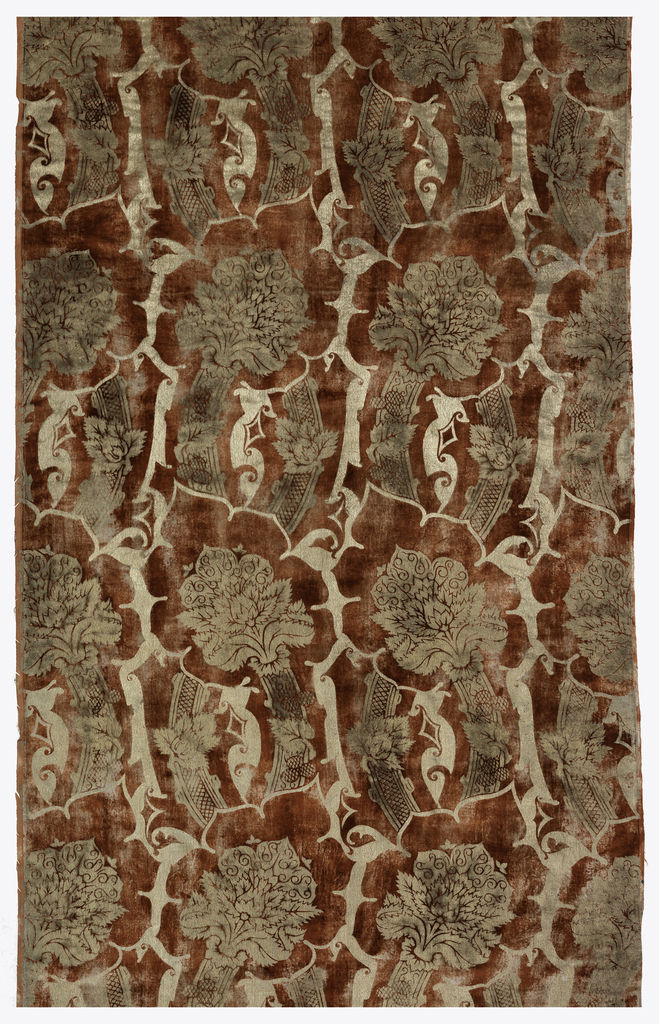In preparation for the exhibition "A Dark, A Light, A Bright: The Designs of Dorothy Liebes," textile conservators analyzed textile samples to better understand and care for the objects.
How textiles are stored greatly impacts their future condition. Creases created by folding textiles become deeply engrained; stress along these folds can create breaks in the fibers, eventually leading to tears; discoloration from light exposure, internal chemical degradation, and exposure to acidic environmental factors like wood furniture, non-archival paper, etc. intensifies along the exposed surfaces...
Suzani, meaning “of needle” in Persian, are large-scale embroideries central to Central Asian domestic culture. Young girls learned to sew at an early age, often beginning to work on textiles intended for their own marriage dowries. Suzanis were considered the most important textiles in a dowry. Indicators of skill and family wealth, they were status...
The stomacher was a necessary element of a woman’s daily wardrobe in the eighteenth century. Often elaborately decorated with embroidery, ribbon bows, and metal threads, the triangular shaped accessory covered the open front of the robe à la française. As the fundamental style of dress during this period, these gowns were characterized by their front...
Named after the 17th century Italian painter, “Caravaggio” was designed in the spirit of the Italian Baroque with a pattern of pomegranates and heavy vegetal scrollwork foliate. Fortuny achieved the appearance of woven silk damask by printing on a satin weave fabric of long staple Egyptian cotton, which had a natural sheen, and creating depth...
Embroidered in Bengal, India for the Portuguese market, this colcha, or bedcover, is a result of the interchange of goods and cultural influence between two trade markets. The style and materials are typical of India, but the universal theme of good triumphing over evil is illustrated through a mix of local and European imagery. Eight...
This velvet exemplifies the prodigious skill of Italian velvet weavers in the latter half of the 15th century. The red silk pile is embellished with sparkling allucciolato, or metallic weft loops. The voided areas have no pile, but shine with supplementary wefts of silk wrapped in silver-colored metal. Italian velvet weavers developed a special technique...
Henry and Eleanor Kluck, the design duo known as Elenhank, drew inspiration for Forest from the northern Indiana landscape surrounding their home. When the fabric panels were hung as curtains or wall coverings, the pattern would repeat across large expanses to envelope a space as if it was a woodland glade. This is a continuation...
Mariano Fortuny and his family collected textiles and costumes from around the world, compiling a rich resource that served as inspiration for his own designs. “A fabric design,” he once noted, “concretely captures a moment through the skill of the artist, who responds unconsciously to the place and time in which he lives.” This pattern...
